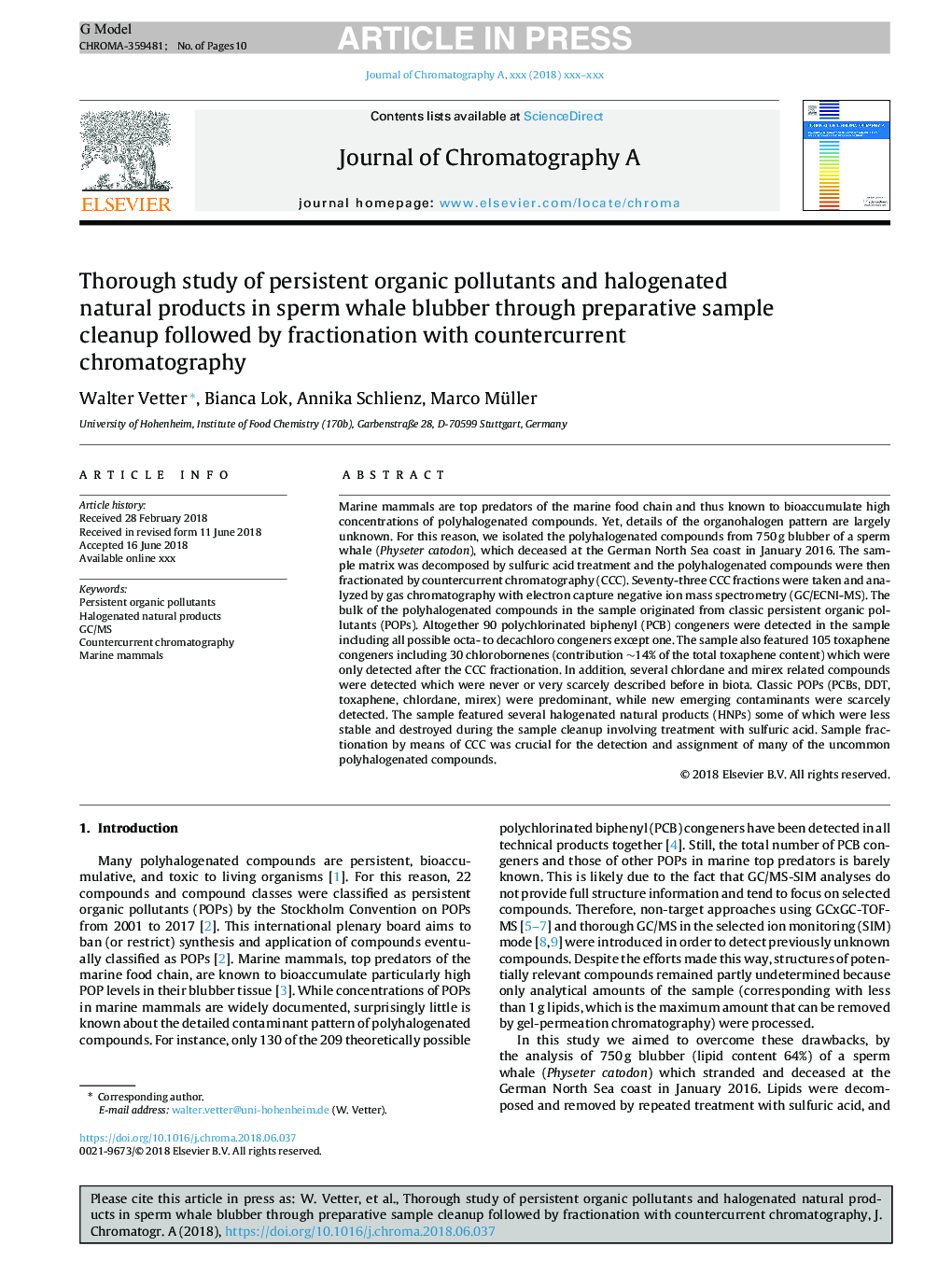| Article ID | Journal | Published Year | Pages | File Type |
|---|---|---|---|---|
| 7607552 | Journal of Chromatography A | 2018 | 10 Pages |
Abstract
Marine mammals are top predators of the marine food chain and thus known to bioaccumulate high concentrations of polyhalogenated compounds. Yet, details of the organohalogen pattern are largely unknown. For this reason, we isolated the polyhalogenated compounds from 750â¯g blubber of a sperm whale (Physeter catodon), which deceased at the German North Sea coast in January 2016. The sample matrix was decomposed by sulfuric acid treatment and the polyhalogenated compounds were then fractionated by countercurrent chromatography (CCC). Seventy-three CCC fractions were taken and analyzed by gas chromatography with electron capture negative ion mass spectrometry (GC/ECNI-MS). The bulk of the polyhalogenated compounds in the sample originated from classic persistent organic pollutants (POPs). Altogether 90 polychlorinated biphenyl (PCB) congeners were detected in the sample including all possible octa- to decachloro congeners except one. The sample also featured 105 toxaphene congeners including 30 chlorobornenes (contribution â¼14% of the total toxaphene content) which were only detected after the CCC fractionation. In addition, several chlordane and mirex related compounds were detected which were never or very scarcely described before in biota. Classic POPs (PCBs, DDT, toxaphene, chlordane, mirex) were predominant, while new emerging contaminants were scarcely detected. The sample featured several halogenated natural products (HNPs) some of which were less stable and destroyed during the sample cleanup involving treatment with sulfuric acid. Sample fractionation by means of CCC was crucial for the detection and assignment of many of the uncommon polyhalogenated compounds.
Keywords
Related Topics
Physical Sciences and Engineering
Chemistry
Analytical Chemistry
Authors
Walter Vetter, Bianca Lok, Annika Schlienz, Marco Müller,
